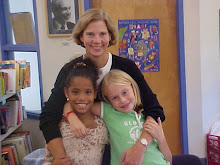Six- and 7-year-old children are active learners. They use all of their senses to learn in a variety of ways. Each child learns at their own pace. Play is their work. Using materials they can manipulate helps them think about how things work, use their imagination, and solve problems. They construct knowledge through their experiences.
In this Times Union article veteran teacher, Peter Rawitsch expresses frustration at the lack of time for science, social studies, exploration and play in his public school first grade class. He feels that Common Core and testing pressures have pushed an inappropriate curriculum upon children and teachers alike.
For expert teachers, the most effective way to teach is to get to know the learners in front of them and tailor the teaching/learning experiences accordingly. We are lucky at Parker that we have small class size and the teacher:student ratio in our lower grades of between 1:4 and 1:8 for several hours each week. The teachers know the children and their skill levels intimately. This is an incredible luxury - and it is also why we can customize the learning to a wide range of learners.
In Finland, the most successful country in the world on international tests of reading and math, the schools have no grade level standards. They just don't think that way. Their model is based on the developmental timeline of each individual child - and by knowing each individual, teachers can customize - not standardize - the learning.
The public school system in Finland is more like our private school system. Each school is independent in its methods. Within this autonomy teachers are respected professionals who make decisions about what students need and should learn each day. In this way, Parker is much like Finland. Our students are successful not because of standardization, but because teachers have the freedom to customize the learning.
Friday, March 6, 2015
Subscribe to:
Post Comments (Atom)




No comments:
Post a Comment